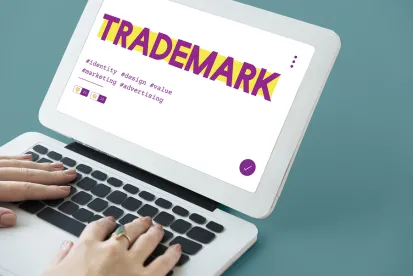The Trademark Modernization Act (TMA) was signed into law on December 27, 2020. The Act introduces significant amendments to the Lanham Act designed to strengthen the rights of legitimate trademark owners. The Act makes it easier for trademark owners to obtain injunctive relief in litigation, provides new mechanisms for challenging trademark applications and registrations on the basis of non-use, codifies the letter of protest procedure, and affords the USPTO greater discretion and flexibility in setting deadlines to respond to office actions.
Restoring The Presumption Of Irreparable Harm
Historically, when seeking injunctive relief, trademark owners were presumed to suffer irreparable harm upon a showing of likely confusion. This changed in 2006, as a result of the Supreme Court’s decision in the patent case, eBay, Inc. v. MercExchange, 547 U.S. 288 (2006). The Court ruled that a plaintiff was not entitled to this presumption, but instead, must prove irreparable harm to obtain an injunction. Following eBay, circuit courts split as to whether this holding applied to trademark cases, with some circuits requiring trademark plaintiffs to affirmatively prove irreparable harm, while other circuits applied the presumption.
The TMA resolves this circuit split by reviving the presumption of irreparable harm. Specifically, the Act amends Section 34(a) of the Lanham Act, 15 U.S.C. § 1116(a), with the addition of the following language, “A plaintiff seeking any such injunction shall be entitled to a rebuttable presumption of irreparable harm upon a finding of a violation identified in this subsection in the case of a motion for a permanent injunction or upon a finding of likelihood of success on the merits for a violation identified in this subsection in the case of a motion for a preliminary injunction or temporary restraining order.”
This provision became effective upon enactment of the TMA.
New Ways To Challenge “Deadwood” Registrations On The Basis Of Non-Use
The TMA also introduces new procedures to allow trademark owners to more easily challenge registrations on the basis of non-use.
These mechanisms include ex parte expungement and reexamination proceedings. An expungement proceeding challenges a registration on grounds that the mark was never used in commerce, whereas a reexamination proceeding challenges a registration on grounds that the mark was not used in commerce on the filing date of the trademark application or amendment to allege use. Petitions for expungement or reexamination must include supporting evidence and a verification that a reasonable investigation was undertaken. The USPTO Director will then determine whether the challenger has set forth a prima facie case, and if so, the Director will allow the registrant an opportunity to respond with contrary evidence. The Director also has the authority to institute these proceedings sua sponte.
In addition to these new procedures, the TMA expressly adds non-use as a grounds for seeking cancellation of a registered mark. Prior to this amendment, cancellation proceedings on the basis of non-use often entailed a showing that the registrant intentionally misrepresented to the USPTO that it used its marks in commerce.
These provisions will become effective on December 27, 2021.
Formalizing Letters Of Protest
The TMA also codifies the letter of protest procedure, which allows third parties to submit evidence for the USPTO’s consideration during the examination of trademark applications. Third parties can submit evidence to support the refusal of an application, and the USPTO Director will then have an opportunity to decide whether to make this evidence part of the examination record. The Director will have until December 27, 2021 to establish the relevant procedures for this new mechanism.
Flexible Office Action Response Periods
Traditionally, the USPTO has required trademark applicants to respond to an office action within six months. The TMA has amended this rule, giving the USPTO greater flexibility to set shortened response deadlines between 60 days and six months. However, the applicant may request extensions of the response deadline up to the original six month period.




 />i
/>i

